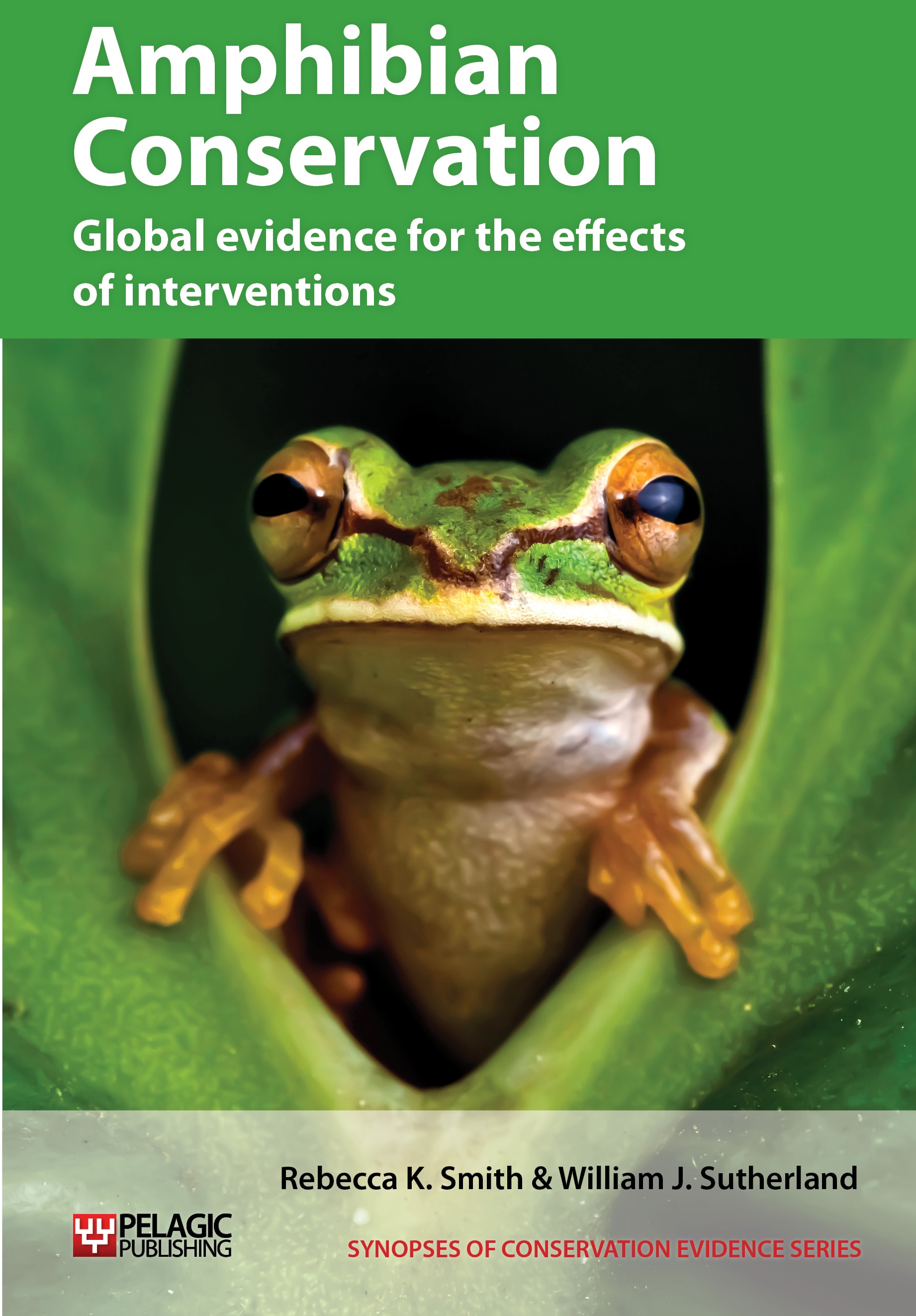Actions to conserve biodiversity
We have summarised evidence from the scientific literature about the effects of actions to conserve wildlife and ecosystems.
Review the evidence from the studies
Not sure what Actions are? Read a brief description.
Search for evidence
e.g. "frogs chytrid"
130 Actions found
Refine
Hide
130 Actions found
Download Actions
| 0 selected |
|
Order results by:
| Action | Effectiveness | Studies | Category | |
|---|---|---|---|---|
|
Exclude domestic animals or wild hogs by fencing Action Link |
Likely to be ineffective or harmful | 5 |
|
|
|
Retain riparian buffer strips during timber harvest Action Link |
Likely to be beneficial | 12 |
|
|
|
Add lime to water bodies to reduce acidification Action Link |
Trade-off between benefit and harms | 5 |
|
|
|
Manage ditches Action Link |
Likely to be beneficial | 2 |
|
|
|
Artificially mist habitat to keep it damp Action Link |
Unknown effectiveness (limited evidence) | 1 |
|
|
|
Install barrier fencing along roads Action Link |
Trade-off between benefit and harms | 10 |
|
|
|
Remove tree canopy to reduce pond shading Action Link |
Unknown effectiveness (limited evidence) | 2 |
|
|
|
Create artificial hibernacula or aestivation sites Action Link |
Likely to be beneficial | 4 |
|
|
|
Engage volunteers to collect amphibian data (citizen science) Action Link |
Likely to be beneficial | 7 |
|
|
|
Clear vegetation Action Link |
Likely to be beneficial | 9 |
|
|
|
Add salt to ponds to reduce chytridiomycosis Action Link |
Unknown effectiveness (limited evidence) | 1 |
|
|
|
Use antibacterial treatment to reduce chytridiomycosis infection Action Link |
Unlikely to be beneficial | 3 |
|
|
|
Use antifungal skin bacteria or peptides to reduce chytridiomycosis infection Action Link |
Unlikely to be beneficial | 5 |
|
|
|
Immunize amphibians against chytridiomycosis infection Action Link |
Unknown effectiveness (limited evidence) | 1 |
|
|
|
Remove the chytrid fungus from ponds Action Link |
Unknown effectiveness (limited evidence) | 1 |
|
|
|
Treat amphibians with chytridiomycosis in the wild or pre-release Action Link |
Unknown effectiveness (limited evidence) | 1 |
|
|
|
Sterilize equipment when moving between amphibian sites Action Link |
Unknown effectiveness (limited evidence) | 2 |
|
|
|
Use gloves to handle amphibians Action Link |
Unknown effectiveness (limited evidence) | 4 |
|
|
|
Use temperature treatment to reduce chytridiomycosis infection Action Link |
Likely to be beneficial | 5 |
|
|
|
Create walls or barriers to exclude pollutants Action Link |
Unknown effectiveness (limited evidence) | 1 |
|
|
|
Create refuges Action Link |
Likely to be beneficial | 7 |
|
|
|
Provide education programmes about amphibians Action Link |
Likely to be beneficial | 6 |
|
|
|
Engage landowners and other volunteers to manage land for amphibians Action Link |
Likely to be beneficial | 8 |
|
|
|
Use herbicides to control mid-storey or ground vegetation Action Link |
Likely to be ineffective or harmful | 5 |
|
|
|
Legal protection of species Action Link |
Unknown effectiveness (limited evidence) | 5 |
|
Download Actions
| 0 selected |
|

Amphibian Conservation - Published 2014
Amphibian Synopsis
Watch this search
If you are familiar with RSS feeds, please click the button below to retrieve the feed URL:
RSS feed for this searchIf you are unfamiliar with RSS feeds, we would suggest reading this BBC article.
Unfortunately, due to the number of feeds we have available, we cannot provide e-mail updates. However, you could use tools such as Feed My Inbox to do this for you.
What are 'Individual studies' and 'Actions'?
Individual studies
An individual study is a summary of a specific scientific study, usually taken from a scientific journal, but also from other resources such as reports. It tells you the background context, the action(s) taken and their consequences.
If you want more detail please look at the original reference.
Actions
Each action page focuses on a particular action you could take to benefit wildlife or ecosystems.
It contains brief (150-200 word) descriptions of relevant studies (context, action(s) taken and their consequences) and one or more key messages.
Key messages show the extent and main conclusions of the available evidence. Using links within key messages, you can look at the paragraphs describing each study to get more detail. Each paragraph allows you to assess the quality of the evidence and how relevant it is to your situation.
Where we found no evidence, we have been unable to assess whether or not an intervention is effective or has any harmful impacts.





)_2023.JPG)














